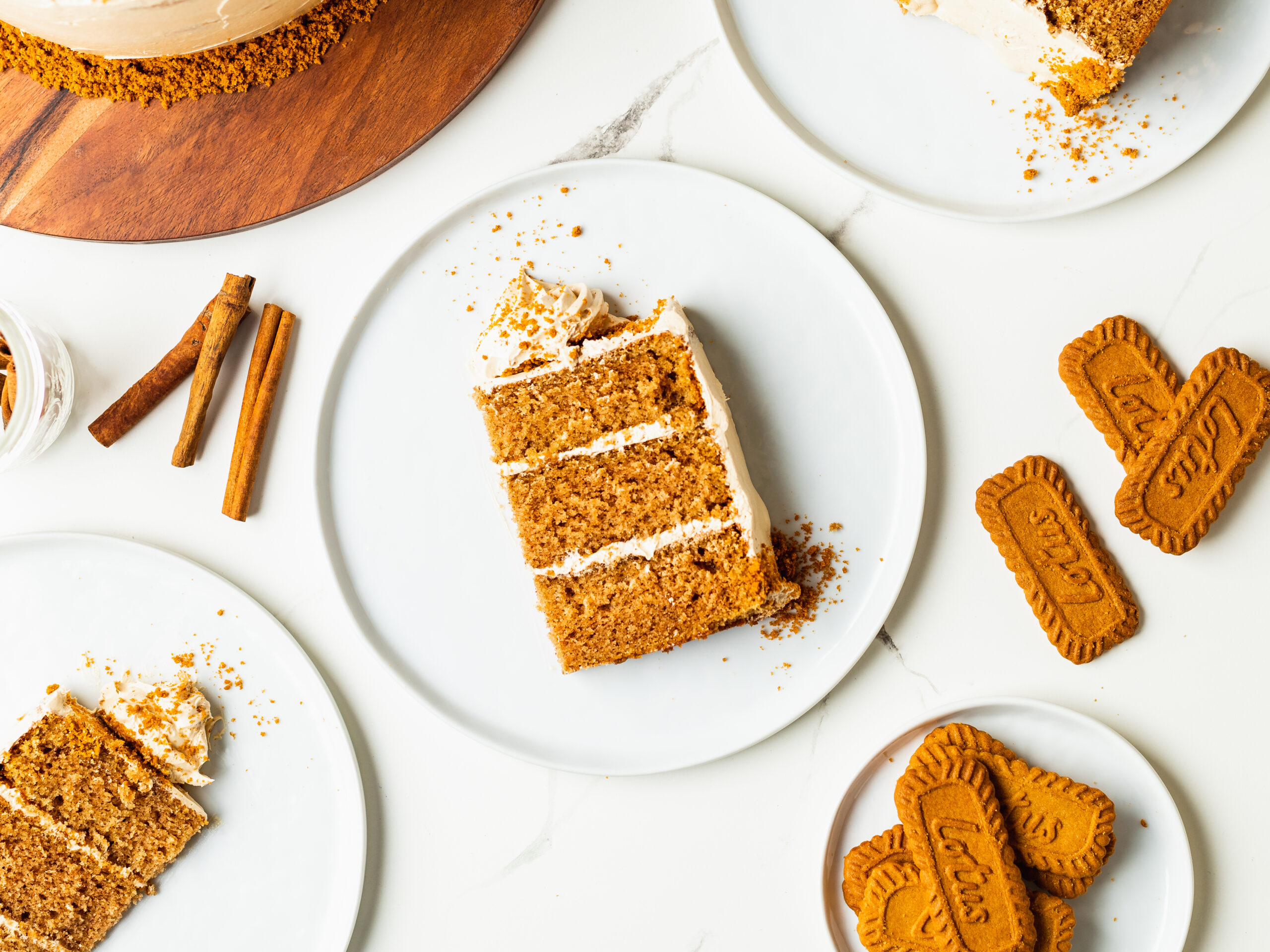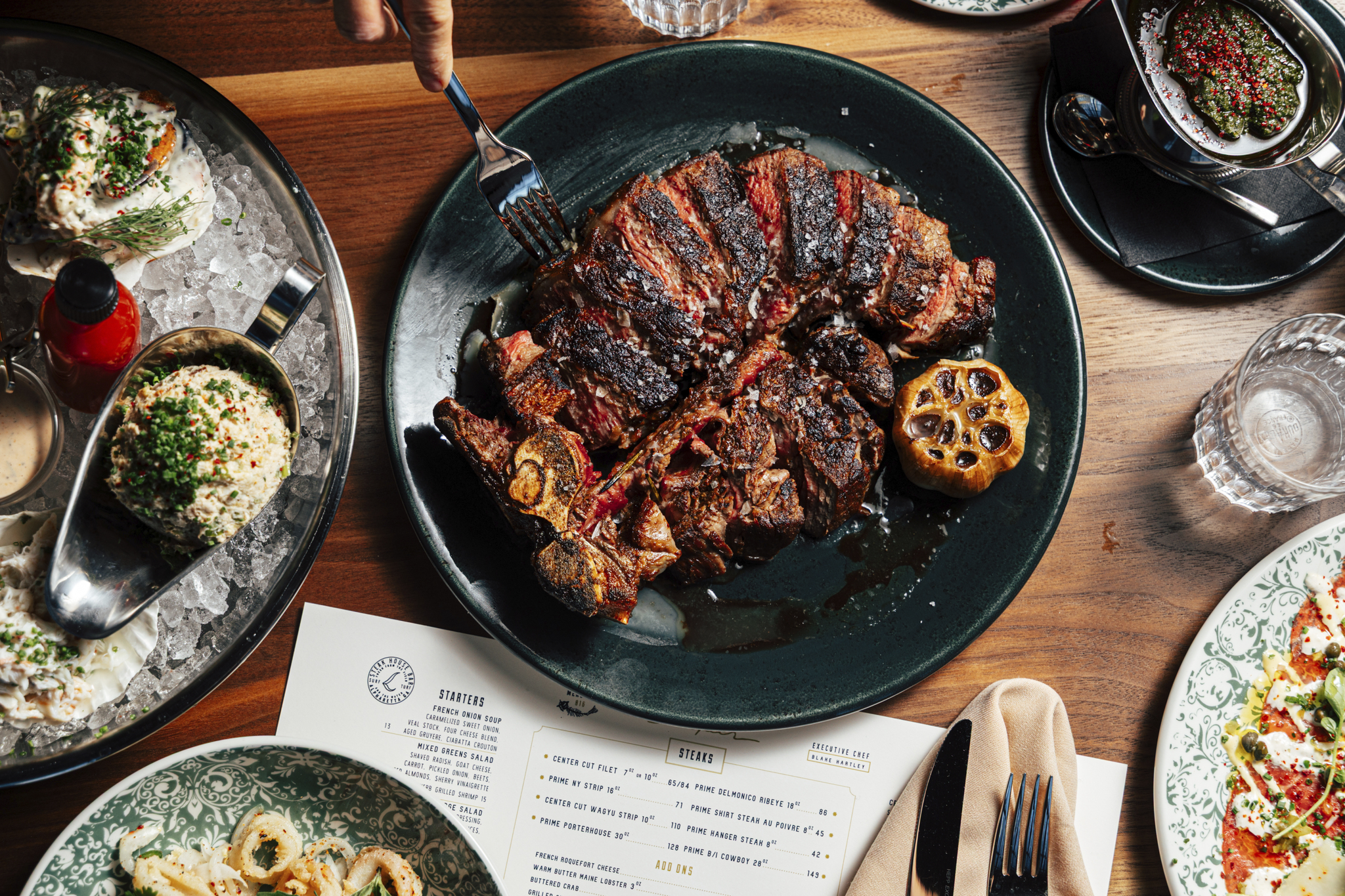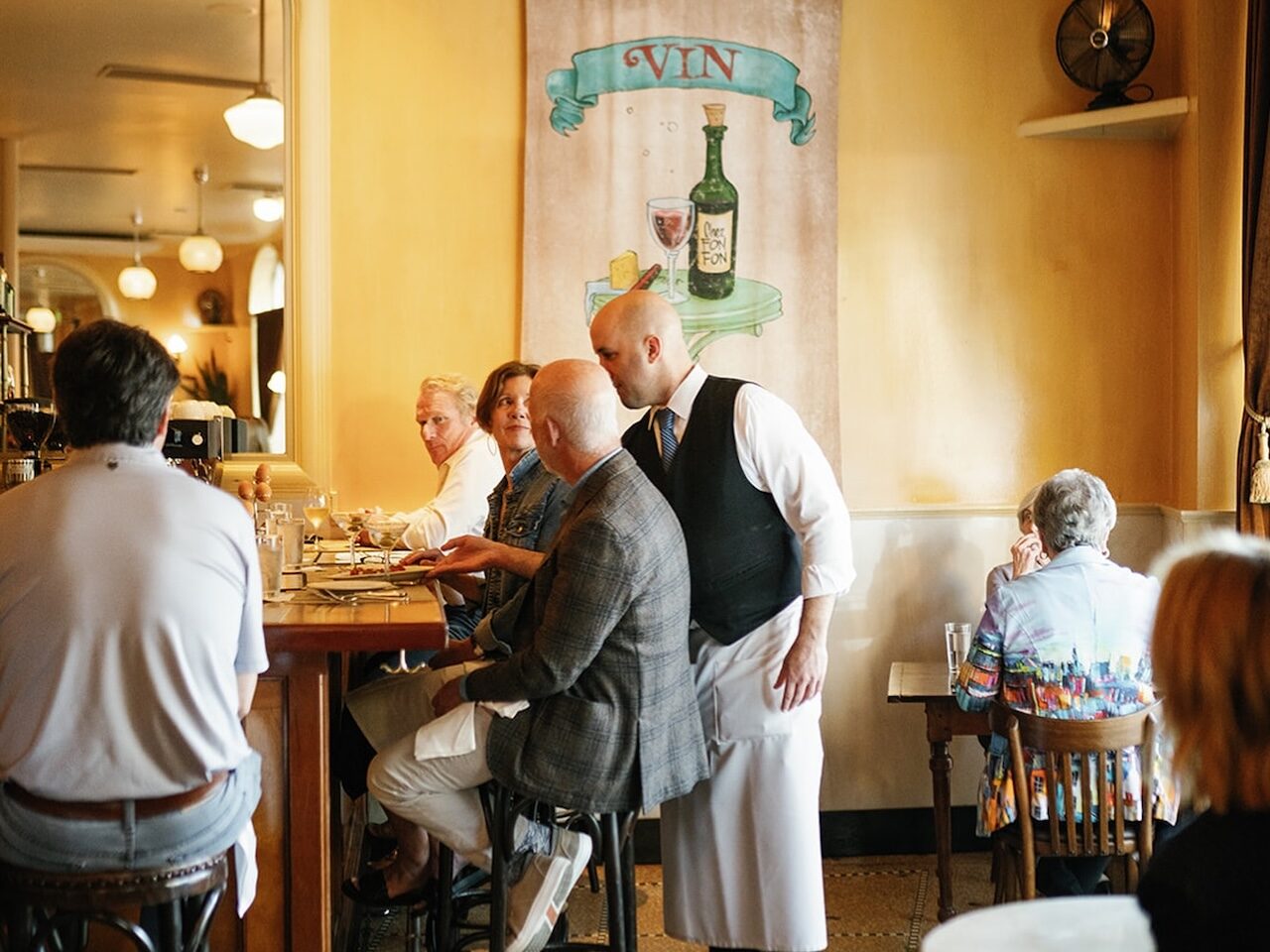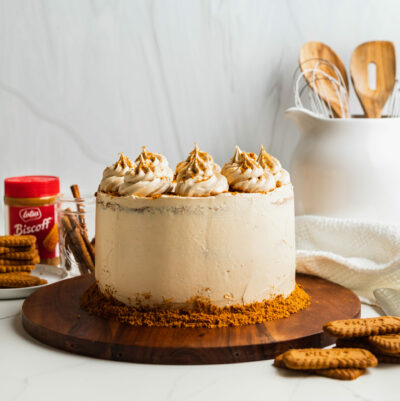
(Molly Bolton/Contributed)
Does everyone know what cookie butter is? I have to ask because I, too, at one point in my life was unaware of the heavenly spread that is cookie butter. I remember trying cookie butter for the first time when my husband and I, newlyweds at the time, lived in Nashville, Tennessee. I picked up a jar at Trader Joe’s after reading a label that essentially said “here’s some delicious, creamy peanut-butter-esque spread, but we swapped the peanuts for cookies. Try it!” So I did. And do you know what I found? Bliss. For those of you who don’t know, cookie butter is a sweet, creamy spread made from pulverized spiced cookies—think those Biscoff cookies you get on an airplane. Its flavor is reminiscent of gingerbread, which makes it perfect for holiday baking.
This cookie butter layer cake is typically my go-to dessert if I’m hosting a holiday party. When it comes to holiday desserts, most people think of pies, cookies, and Bundt cakes. But there’s something about a layer cake that, pun very much intended, takes the cake. It’s pretty, it’s eye-catching, it’s a show-stopper. Most importantly, it’s delicious. Baking and decorating a cake does take some extra time, but it’s the extra time and attention that I think goes a long way in showing the guests in your home that you’re glad they’re there. Don’t get me wrong, I love quick and easy recipes that make holiday hosting easier, but I also find joy in taking the time to create something special for my guests. A slice of cake communicates forethought and hospitality, and I think that kind of warmth does the soul some good.
So friends, whether you make this cake for your next holiday gathering or just because, be sure to enjoy the time you take to make it. And of course, I always advise sharing a slice of cake with someone you love. Especially when there’s cookie butter involved.
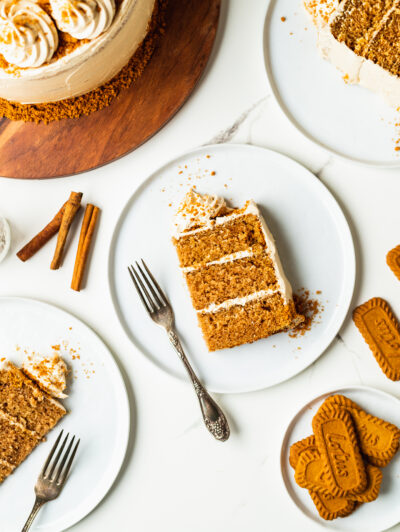
(Molly Bolton/Contributed)
Cookie Butter Layer Cake
Ingredients
For the cookie butter cake:
- 75 gm (1/3 cup) unsalted butter, softened
- 80 gm (1/3 cup) creamy cookie butter
- 168 gm (3/4 cup) vegetable oil
- 300 gm (1 1/2 cups) granulated sugar
- 120 gm (1/2 cup, firmly packed) light brown sugar
- 4 large eggs, at room temperature
- 180 gm (3/4 cup) sour cream, at room temperature
- 2 teaspoons vanilla bean paste (or vanilla extract)
- 375 gm (3 cups, spoon and leveled*) all-purpose flour, sifted
- 1 1/2 teaspoons baking soda
- 2 1/2 teaspoons baking powder
- 1/2 teaspoon kosher salt
- 3 teaspoons ground cinnamon
- 1 1/2 teaspoons ground nutmeg
- 240 gm (1 cup) whole buttermilk, at room temperature
For the cookie butter Swiss meringue buttercream:
- 8 large egg whites
- 400 gm (1 cup) granulated sugar
- 1/4 teaspoon kosher salt
- 452 gm (2 cups) unsalted butter, slightly softened but still cool**
- 1 tablespoon vanilla bean paste (or vanilla extract)
- 300 gm (1 1/4 cups) creamy cookie butter
- Crushed up Biscoff cookies for decoration (optional)
Directions
To make the cookie butter cake:
- Preheat the oven to 350°F. Spray three 8″ cake pans with baking spray and line the bottom of each with parchment paper.
- In the bowl of a stand mixer fitted with the paddle attachment, add the butter and cookie butter and beat on medium speed until combined and creamy. Add the vegetable oil and beat on low speed until homogenous with the butter.
- Next, add the sugar and brown sugar to the mixing bowl, and beat on medium speed until combined and light in color, about 2 minutes. Scrape down the sides of the bowl. One at a time, add the eggs, mixing on medium speed for 20 seconds after each addition. Mix in the vanilla.
- In a separate bowl, combine the sifted flour, baking soda, baking powder, kosher salt, ground cinnamon and nutmeg. In another separate bowl or large liquid measuring cup, whisk the sour cream and buttermilk together until smooth and combined.
- Beginning and ending with the flour mixture, alternate adding the flour mixture and the buttermilk mixture to the batter, mixing on low speed until just incorporated after each addition. Be careful not to overmix. Divide the batter evenly between the prepared cake pans.
- Bake for 28 to 32 minutes, until the edges of the cake are pulling away from the sides of the pan and a toothpick inserted into the cake comes out clean. Allow the cakes to cool in their pans for 10 minutes before turning out onto a wire rack to cool completely.
To make the cookie butter Swiss meringue buttercream:
- Combine the egg whites, sugar and kosher salt in a heatproof bowl set over a pot filled with 2″ of simmering water, being sure that the water does not touch the bowl with your ingredients. Whisk constantly until the sugar has dissolved and an instant read thermometer registers 160°F, about 7 to 9 minutes.
- Carefully transfer the egg white mixture to the bowl of a stand mixer fitted with the whisk attachment. Whisk on high speed for 7 minutes; the mixture should look light and fluffy.
- Reduce the mixer to medium-low speed. Add the butter, 2 tablespoons at a time, making sure each portion of butter is incorporated before adding the next. Once all the butter has been incorporated, increase the mixer to high speed and whip for 8 minutes, until the meringue is glossy and fluffy. Add the vanilla and cookie butter and mix on high until fully combined. Use immediately on the cooled cakes.
Assembly:
- Place a small dollop of buttercream on the center of a cake turntable or cake stand. Place the bottom cake layer over the dollop of buttercream and gently press to secure to the surface.
- Next, spoon about 1/2 to 3/4 cup of buttercream onto the bottom layer and smooth into an even layer using an offset spatula. Carefully place the next cake layer on top and very gently press to adhere the two layers together. Repeat this process with the third layer.
- Apply a crumb coat. To do this, apply a thin layer of buttercream to the entire cake, smoothing with an offset spatula or icing smoother. Place the cake in the fridge for 20 minutes. Allowing the initial layer of buttercream to set in the fridge makes applying the final layer of buttercream easier. (NOTE: check your bowl of buttercream towards the end of the chill time. If the buttercream seems soupy, pop it in the fridge to chill for 2 to 3 minutes to firm up.)
- Remove the cake from the fridge. Apply a layer of buttercream over the surface of the cake and finish as desired. To recreate the finish, I chose for this cake, use a combination of an icing smoother and offset spatula to create a smoother look. Sprinkle the top outer edge of the cake with crushed Biscoff cookie crumbs, then finish by piping swirls around the perimeter of the cake using a large open star tip (I used an Ateco #828).
Notes
*How to measure flour using the spoon and level method: if you don’t have a kitchen scale, I recommend using the spoon and level method to measure your flour. This will give you a much more accurate measurement than scooping with a measuring cup. First, loosen the flour in the canister or bag by fluffing it with a fork. Next, spoon the flour into your measuring cup until it’s full. Then, holding the cup over the canister or bag of flour, use the back of a knife to level off the flour.
**Butter for the Swiss meringue buttercream should be slightly softened, but still cool to touch. Setting the butter out for 30 to 40 minutes before making the buttercream will typically give you the right temperature and consistency for your butter.
Storage: Leftovers can be stored covered at room temperature for up to 2 days or in the in the fridge for up to 1 week. For best results, allow chilled cake to come to room temperature before serving.
